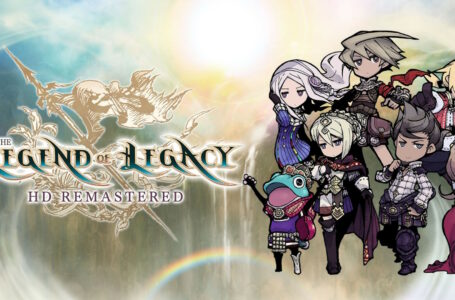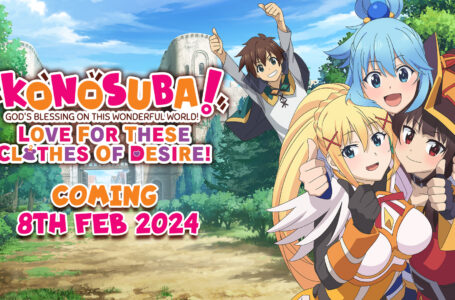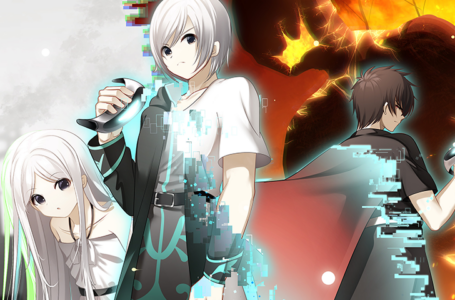Ys VIII: Lacrimosa of Dana Review (Switch)
Personally, I’m a huge fan of JRPGs, the problem being that I often don’t have time to play them through. Ignoring my better judgement over whether it would be wise, I started Ys VIII: Lacrimosa of Dana on Nintendo Switch, and I settled in for what I was prepared to be the long haul.
The story of Ys VIII is, for the most part, wonderfully simple for a JRPG. The protagonist, Adol Christin, washes up on a desert after a small ship-based interlude and begins a quest to escape from the long-rumoured ‘cursed’ island of Seiren. Along the way, he discovers a rag-tag band of castaways, a beautiful and dangerous island, and a mystery involving long-extinct species and an ancient city.
The only time that this simplicity gets a little eschewed is with the occasional segments involving Dana, which are nowhere near as enjoyable or as comprehensible as the main story. Like most games, once you bring an element of time travel in it gets a little messy. Luckily though, the Dana segments are quite short, and you can very quickly get back to the Adol and his merry troupe.
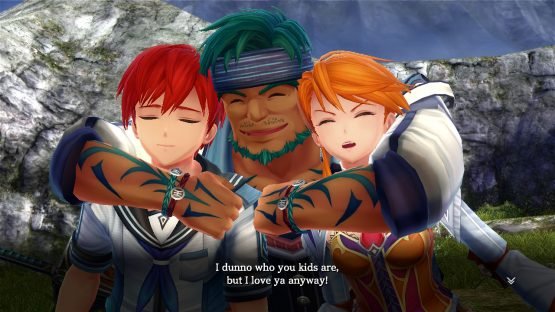
Ys VIII, in many ways, is a typically crafted action JRPG. You run around the world, filling in the map as you go, attacking enemies in real time battles. There’s levelling up, flashy attacks, equipment creation and upgrades, and more numbers and such than you can shake a stick at (I’ve never really understood that term). Anyone expecting a standard JRPG in every aspect though, might be pleasantly surprised.
The game is essentially divided into exploratory and combative gameplay. Exploration sees the player running, jumping and climbing around the various locales of the Isle of Seiren, gradually revealing the map as you progress. Any object of interest (chests, locations, etc.) appears on the maps as you explore, and you will want to because you’re on a deserted island and whatever resources you can find will invariably turn out to be thoroughly useful for crafting, cooking, or forging.
You will meet characters out on these excursions that will, after a small scene, join the Castaway Village. This is important because occasionally, while running around, you will find a rockslide or something similar blocking your progress. This is where you can call for help from the village and, if you have located enough villagers, they will come to your aid to clear a path. But that’s not the only use of the villagers …
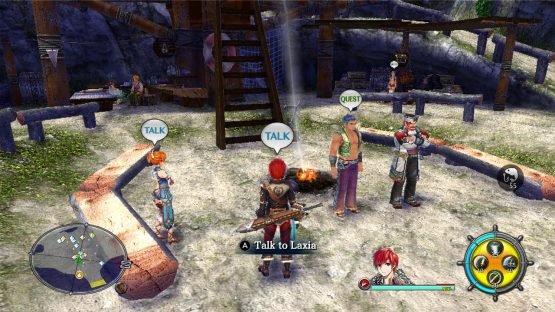
A fair amount of the castaways have skills that can be used once they join the village. Whether it be Kathleen’s smithing skills being employed to enhance your weapons, or Reja tending to the farm in the village, resulting in the growing of crops to use in cooking, you will really want to find everyone. Furthermore, the more villagers you have, the easier (or at least, more manageable) you will find the Raids and Hunts, but more on those in a moment.
The in-game fighting (at the core level) is simple, relying on a single attack string and the use of a selection of pre-set Skills mapped to holding ‘R’ and pressing one of the face buttons to execute special attacks. These Skills can only be used if the character has sufficient SP (Skill Points), which can be regained through normal attacks, creating a situation where the player has to alternate between attacking and using special attacks for optimal damage.
Layered on top of this, however, are additional mechanics that need to be observed to fight effectively. Firstly, the jump can be used to attack from the air and can chain attacks in air, using the Skills that launch your enemies into the skies. Secondly, each character in the game has a different attack type (split between Slash, Pierce, and Strike), so will be stronger against different enemies, which is indicated by locking on to the enemy in question.
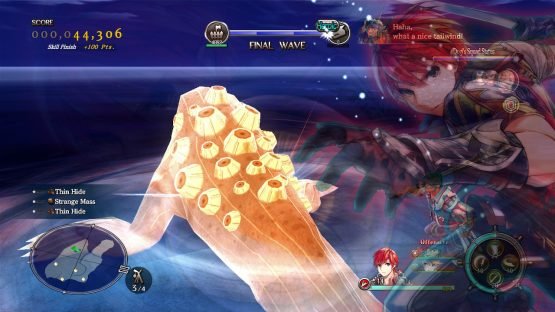
Thirdly, is the EXTRA gauge, located in the centre of the wheel in the lower-right corner. This will fill when the player successfully lands Skills on enemies, and when it is full can be used to unleash a cinematic attack by the character that the player currently has control of for considerable damage simply by holding ‘R’ and pressing ‘L’. This gauge, like the SP one, fills for the whole party not an individual member, so make sure you’re controlling the right member of your party for maximum damage.
Finally, there are the advanced tactics; Flash Move and Flash Guard. These can be activated that precisely the moment before the attack of the enemy connects with your character. Flash Move, activated with ‘L’, will give the player both increased mobility and temporary invincibility; and Flash Guard, mapped to ‘R’, will give temporary invincibility, increases to both SP and EXTRA gauges AND make all of your attacks critical blows for a short time.
So, needless to say, there is a lot to the combat alone, especially when you factor in a roster of characters with different movesets, strengths and weaknesses to work around. In fact, I personally found the combat so enjoyable that I actively sought out confrontations wherever possible, even sometimes not using the quick travel mechanic to get around just to get a few more fights in on the way to my destination.
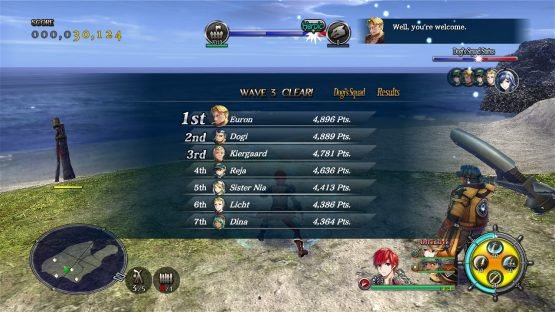
You aren’t just fighting in the overworld, as you also sometimes have to participate in Raid or Hunt missions. Raids involve protecting the Castaway Village against waves of enemies. In these, the villagers will both be lending a hand to you with attacks and buffs to your party but also be engaging in a fight of their own, shown by a bar on the right and constant updates from Little Paro.
Furthermore, you can make these Raids easier by speaking to Dogi in the town and adding more defensive structures, levelling up the ones you possess, or giving the structures you have status effects they can inflict on the enemies. Even with these upgrades and the aid of the villagers, the Raids can be tough, with both powerful enemies coming at you constantly, and the aid coming rather sporadically.
Hunts, on the other hand, involve you bringing the fight to the beasts and invading the dwelling of a powerful creature to eradicate it before it grows in power. These also have a set objective, with the destruction of hives of beasts needed before the leader shows itself, so the Raids and Hunts make a welcome strategic change of pace. My only gripe with them is making some of them compulsory for story progress; but if you don’t mind getting a low score on them, then they’re easy to blast through with minimum effort.
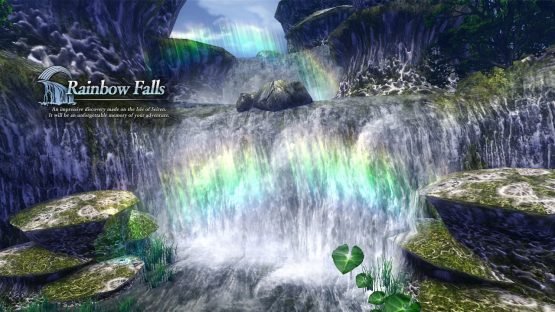
A refreshing aspect of the game is that every aspect of the gameplay is actually working towards the goal of leaving the island. Searching for castaways, completing quests for said characters, uncovering the map, building up and fortifying the Castaway Village … all of this of this gameplay is working in a single direction, and it never loses sight of that under the weight of the copious amount of things to do.
For instance, the core desire of everyone to escape the island. As the task of building a ship to escape is a large undertaking, it would make sense that there would be a need for a large group to successfully build it. So the need for find people, protect them, and keep them happy actually feels right. For a JRPG, and a relatively long one at that, Ys VIII feels wonderfully un-padded, which makes it really stand out amongst its contemporaries in my opinion.
This being said, there are plenty of things to do in the game, and the player is kept in the loop about this at all times. The overall percentage you have explored each area, along with chests and harvest points, is always displayed on the map menu, and the player is given rewards for unveiling each 10% of the overall map. This only increases the number of tangible rewards the player receives for exploring, and works very well for the game.
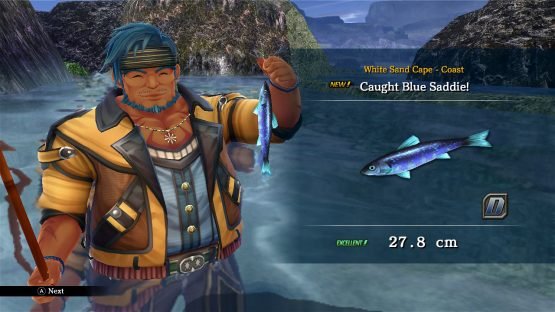
As a final gameplay thing I have to laud this game for is the fishing mini-game. I usually avoid these like the metaphorical plague as they are normally cumbersome, sometimes intrusive, and always god awful breaks in otherwise good games. However, I have to admit that the fishing in Ys VIII was not only bearable, but I would go as far as to call it enjoyable. What’s more, it’s completely optional and avoidable if it isn’t your thing.
Visually, Ys VIII is mostly a breathtaking experience, with sweeping vistas, interesting and varied enemies, and an array of likeable and well-designed characters. The only problems I found here were that, when played in handheld mode on Switch, the frame rate dipped quite considerably on occasion. This being said, in the TV mode (where I mostly played), the game was utterly beautiful and didn’t have this issue at all. If you add this to an incredible soundtrack and some very well-directed voice-acting, the entire aesthetic package is close to perfection (while docked, anyway).
So, should you buy Ys VIII: Lacrimosa of Dana? Absolutely and unequivocally yes. With a reduction on the fluff, an easy-to-learn combat system and a plot that (unlike many JRPGs) doesn’t border on the incomprehensible, Ys VIII stands as a fantastic example as to how these games should be made and one I’ll now hold as a benchmark to mark any future JRPGs against. An essential Switch purchase.
- New Persona 5 Royal Trailer Introduces Kasumi And Special Edition Revealed - June 6, 2019
- New Bloodstained: Ritual of the Night Character Revealed Ahead Of Release - May 31, 2019
- Final Fantasy XIV: Shadowbringers Preview - May 29, 2019



